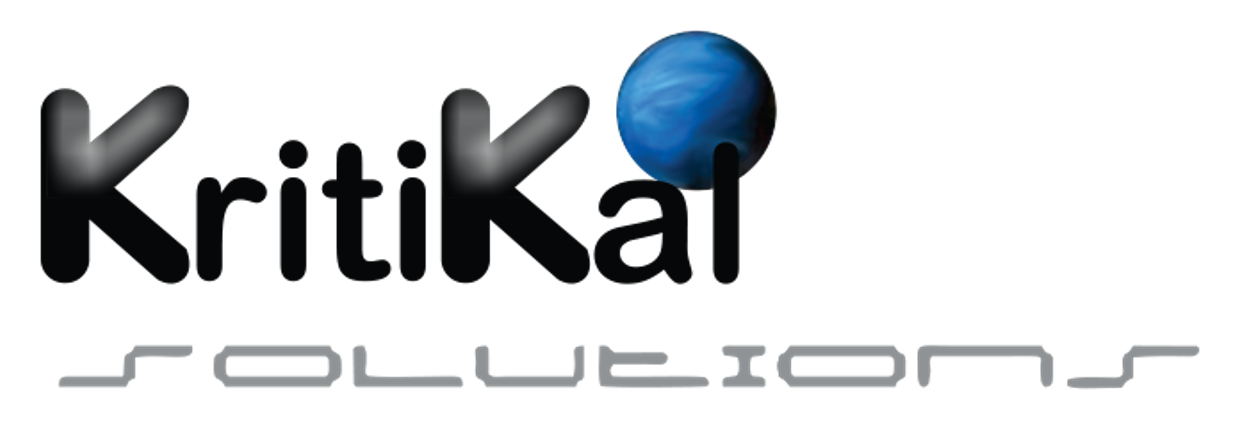What is Telemedicine App Development?
Telemedicine refers to a practice amongst various other medical technology solutions in which healthcare services and consultations can be delivered remotely with the help of digital communication technologies such as mobile and web-based applications, chats, video and phone calls, etc. Patients can easily consult doctors, receive prescriptions, diagnoses, and monitor health online without the necessity to visit them in person in hospitals or clinics. A telemedicine mobile app acts as a digital platform to enable direct interaction between healthcare professionals and patients for diagnoses, treatment plans, and follow-up consultations through phablets, desktops, laptops, smartphones, tablets, etc.
It is useful for storing and sharing medical reports, patient history, as well as health record management over secure platforms, and allows doctors to issue e-prescriptions after online consultations. It facilitates secure payments for various telemedical services and enables booking of consultation or appointment scheduling and respective reminders. It also makes possible the integration of IoT healthcare devices through effective wearable product design and development for tracking vital signs, remote health monitoring and lets patients speak with health and wellness professionals through voice calls, video calls, and chat in real-time. Development of telemedicine apps leads to an increase in accessibility to healthcare in remote areas, reduces travel time and expenses at both the patient and doctor’s end. It enables monitoring of continuous care and follow-ups and improves overall efficiency for healthcare providers.
The telemedicine field and its applications have been on the rise due to an increase in software development services and mobile app development service, especially in recent years, given their convenience, efficiency, and a worldwide push for virtual consultations and remote healthcare. However, it also becomes important to protect sensitive patient data or Protected Health Information (PHI) as per the security and privacy standards issued by the Health Insurance Portability and Accountability Act (HIPAA). The Act also explains Breach Notification Rule, Privacy Rule, Omnibus Rule, and Security Rule related to ePHI security. The global market for telemedicine is approximately valued at about US $111.99 billion in 2025 and is projected to reach a value of about US $334.8 billion by 2032, rising at a CAGR of 16.93% during this period. Let us further look at the HIPAA-compliant practices and security measures required for the development of these applications, necessary features, and key steps involved.

Source: Grand View Research
Growing market size of telemedicine application development during 2018 and 2030 forecast period
Features of a Telemedicine Mobile App
A robust telemedicine app needs a set of complex features that cater to the diverse needs of patients and healthcare professionals. Each of these features must be compliant and precisely designed while keeping user-friendliness in mind.
Patient Engagement
Telemedicine applications showcase certain patient-facing features and have been optimized for intuitiveness. This includes ease of profile management where patients can manage their health profile, information related to allergies, medical history, and medications. The apps allow for secure registration process through multi-factor authentication (MFA) through email verification, one-time passwords, biometrics, Authi0, AWS Cognito implementation, etc.
Patients can easily browse and select available healthcare professionals and slots for appointments as well as receive automated push notifications and reminders for bookings, critical health alerts, and prescribed medication intake over the apps. These apps also showcase intuitive features such as screen sharing, virtual waiting rooms, encrypted video and audio calling, pseudonymization techniques for file sharing, and more to render high-quality consultations.
Secure telemedicine app development is ideal for HIPAA-complaint text messaging with professionals, real-time question answers, feedback, document sharing, and follow-ups. Telemedicine apps also seamlessly connect stock monitoring system, medical inventory management system, and pharmacies for prescription refills and for receiving e-prescriptions directly. These showcase Payment Card Industry Data Security Standard (PCI DSS)-compliant payment system including portal billing such as in e-commerce app development or telemedicine web app integrated for sending and receiving consultation fees, subscriptions, etc.
AI-enabled preliminary assessment, symptom checker or triage feature can guide patients to the required healthcare professional or specialist. The overall health summaries, Electronic Health Records (EHR), laboratory results, and consultation notes can be integrated in these apps for ease of access.
Healthcare Provider Interaction
Telemedicine applications showcase certain features that have been optimized for streamlined workflows for the ease of usage by healthcare professionals or providers, doctors, etc. This includes secure authentication process for tamper-proof login by professionals and profile management that details out licensing, availability, and specialties.
They can easily check their upcoming appointments, block slots for breaks, manage patient queries and queues, and accept or decline the set schedule as per their hospital work. They can instantly access patients’ Electronic Medical Records (EMR), current medications, diagnoses, histories, consultation notes, etc. securely via an integrated web portal.
They can share their screen and documents through these apps during secure video or audio consultation calls with patients, review reports, images, and more. The apps can also feature an integrated e-prescription module that checks drug interactions and directly sends prescriptions to pharmacies.
Another important feature of telemedicine app development includes support for HTTPS communication or TLS 1.2 encrypted network traffic between healthcare professionals for seamless collaboration, chat, and consultation with colleagues. The apps are also capable of making digital notes, charts, documenting diagnoses, details related to consultation, and treatment plans. These are helpful for administrative purposes and tracking invoices, bills, earnings, and consultation reports.
Administrative Management
Certain admin panel features and role-based access controls (RBAC) are necessary for centralized telemedicine applications, such as tools for patients, doctors, and any user management for onboarding, monitoring of accounts, credential verification, etc. Admins need to be able to oversee appointments, set the professionals’ available slots across platforms, and resolve booking-related conflicts.
Also, through legacy app modernization, these apps can be enhanced and made useful for managing all education resources, frequently answered questions, in-application notifications, blog articles, etc. through a robust Content Management System (CMS). These ease dispute resolution and mediation, supporting customers, as well as handling any technical issues or queries put forward by the users.
Admin panels are especially crucial for compliance and audit logs shipped into Security Information and Event Management (SIEM), monitoring of all security-related incidents using Splunk, ELK Stack, AWS Cloudwatch, JSON Web Token (JWT) management, misconfigured session handling, PHI identification, access logs, and ensuring adherence to regulations.
They can refer to insightful data showcased over dashboards, such as robust reporting on financial metrics, frequently ordered services, application usage, patient engagement, performance of healthcare providers, feedback, and more. Another important feature of these apps is that they are crucial for billing dispute management, payment, invoice management and processing, revenue tracking, refund handling, etc.
Steps of Telemedicine App Development
Developing a virtual care platform or telemedicine app can be a complex process given the current standards of security and regulatory compliance. A well-defined, user-centric, structured and secure approach to build customized, robust and valuable telehealth applications.
1. Planning: The initial step involves in-depth discovery, compliance planning, strategic consulting, and a thorough business requirement analysis where the objective, target audience, and clinical workflows that need to be digitized are defined. Specialized legal counseling sessions on regulatory requirements like HIPAA, GDPR, etc. are conducted to be embedded into the app’s Zero Trust Architecture (ZTA) and design.
All the essential features for a minimum viable product are outlined in this step for swifter time-to-market, cost management, and planning further phases. Moreover, in-depth technical feasibility and potential risk assessments are conducted to evaluate integration of features as per stringent regulatory compliance.
2. Prototyping: Intuitive user flow journeys are mapped by a telemedicine app development company for healthcare professionals and patients with a clear emphasis on data privacy, transparency, ease of access, navigation, and consent flows. Early feedback and refinement strategies in the application structure, functions, and user experience are devised once interactive prototypes and low-fidelity wireframes are created similar to medical device design services.
A compliance-driven, accessible as per Web Content Accessibility Guidelines (WCAG), professional, clean, seamless, navigable, and cognitive loading UI/UX design with intuitive iconography that requires minimal clicks is developed that aligns with the brand’s objectives.

High-level architecture and design for telemedicine application development
3. Backend Architecture: Scalable tech stack such as React.js for portal, Node.js, Ruby on Rails, Django or Java for backend, MongoDB or PostgreSQL for databases, with robust security features and enterprise-grade reliability is selected while a compliant and secure database schema is designed and encrypted using AES-256 for storing PHI and implementing encrypted transit and rest.
Encrypted APIs implemented using OAuth 2.0 authentication protocols through video API providers such as Twilio or Vontage, and messaging APIs such as Firebase or Socket io are developed for compliant communication between the patient, doctor, and admin panel-facing interfaces, third-party integrations such as cloud-based ERP system,. At the backend, HIPAA-aware cloud infrastructure is set up and deployed with strict access controls, security configurations, and auditable capabilities.
4. Frontend Development: Native iOS or Android apps or cross-platform mobile apps using React Native, Swift or Flutter are built for user satisfaction and peak performance at both ends during telemedicine application development. Secure and responsive telemedicine web portal development and versions for admin panels, and broad access for patients and doctors is a must.
High-quality and encrypted Web Real-Time Communication (WebRTC) using Agora io for audio and video streaming and WebSockets for chats, secured using coding guidelines such as Open Web Application Security Project (OWASP) for preventing vulnerabilities is used.
5. Quality Assurance: Medical app QA testing includes functional testing, performance testing to check user load handling and data processing, usability testing to refine UX, security and penetration testing to recognize and fix breaches, network security validation, vulnerability testing using Veracode, Checkmarx, or OWASP ZAP, compliance audits and testing, and incident response protocols to mitigate legal risks for all functions and features across platforms, operating systems, and devices.
6. Deployment: The app is prepared and submitted via web application development services to the App Stores like Google Play Store, Apple App Store, etc. post required documentation and guideline adherence checks. Issue resolution, user activity, app performance, security incidents, and compliance metrics can be tracked through secure monitoring tools. The backend infrastructure can be configured and deployed over a secure cloud environment such as Google, AWS, or Azure for scalability and optimal performance.
7. Maintenance: Post-deployment long-term compliance checks are conducted for bug fixing to complete the cycle of application development and maintenance. Security patching, software and regulatory updates, feature enhancement as per market trends, maintenance, scalability planning, and resolving performance and security issues. Audits as per new amendments involves annual risk assessments, RBACs, policy and procedure updates, security reviews, employee training verification, etc., while update management involves security patch schedules, rollback capabilities, testing processes, change documentation, and user notification procedures.
Build a Secure Telemedicine Mobile App with KritiKal
A HIPAA-compliant telemedicine application showcases stringent adherence to security and data protection practices through end-to-end encryption of PHI, role-based access controls, automatic session expirations, MFA, detailed accountability audit trails. Unauthorized modifications are safeguarded against data integrity over HIPAA-compliant cloud infrastructure that showcase Business Associate Agreements (BAAs) with third party vendors. Reliability is ensured through disaster recovery systems and secure communication protocols. Other critical compliance standards, certifications, and regulations in healthcare for developing telemedicine apps include GDPR, ISO 27001, PCI DSS, FDA approvals, SOC 2, HITECH, FHIR, HL7, 21st Century Cures Act, etc.
As a telemedicine app development company, KritiKal Solutions assists organizations in development secure and compliant telemedicine applications, as we understand that the healthcare landscape is driven by growing demands and is rapidly evolving as the rising standards of accessibility, security, and convenient medical care. Telemedicine, being in the center of it all, enables seamless interaction between patients and healthcare professionals beyond the geographical limits while delivering superior user experiences.
We have extensive experience in medical device engineering services, cybersecurity, IT, medical device contract manufacturing, and app and platform development for the health and wellness sector that helps us to build robust data protection and compliance strategies. As this field surges worldwide, we will support you in the development of secure, scalable, and patient-centric mobile applications in healthcare delivery. Please get in touch with us at sales@kritikalsolutions.com to know more about our products and realize your Medtech requirements.

Harsh Khare currently works as a Senior Software Engineer at KritiKal Solutions. He has over 7 years of experience working with microservices monitoring (Prometheus, Grafana), automation of cloud-native infrastructures and CI/CD pipelines. He is proficiently skilled in AWS, Kubernetes, Jenkins, Docker, Terraform, and more. With his ability to support scalable deployments across environments, system reliability improvement, cost optimization skills, and collaborative working in teams, he has assisted KritiKal in delivering various projects to some major clients.



 Global
Global  United States
United States 
